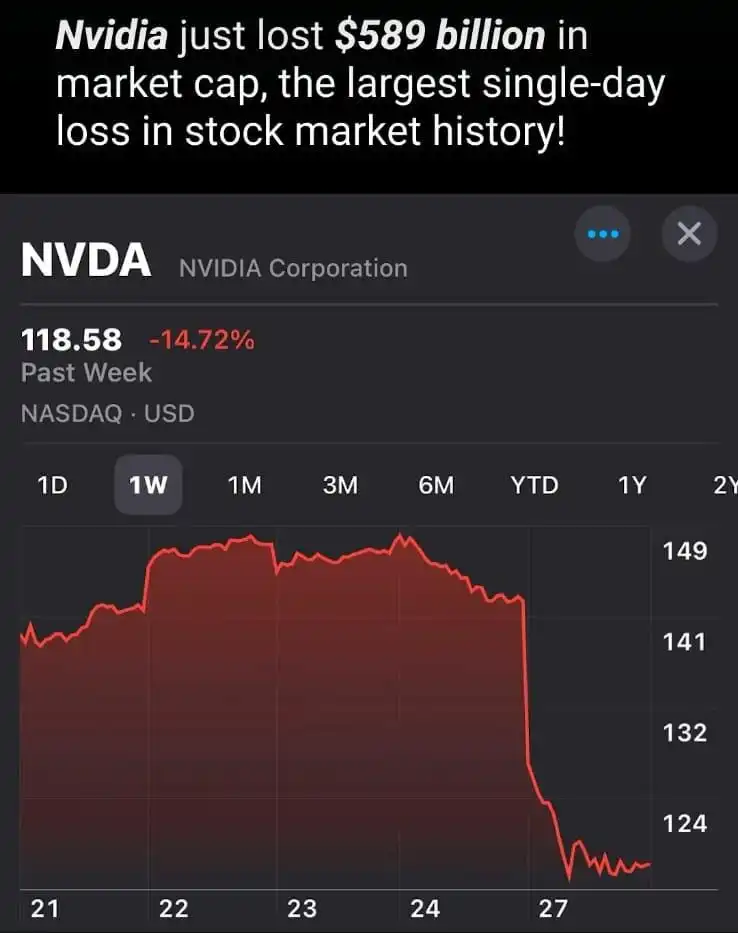For years, the AI race has been dominated by a handful of American tech giants—OpenAI, Google, and Anthropic—fueled by billion-dollar investments and a seemingly insurmountable lead. But in just a few weeks, a new player has sent shockwaves through the industry: DeepSeek. The Chinese AI startup has not only matched the performance of its Western counterparts but has done so at a fraction of the cost, raising fundamental questions about the economics and future of AI.
DeepSeek’s Breakthrough: Disrupting the Cost of AI
AI development has long been thought to require astronomical resources. OpenAI’s GPT-4 reportedly cost over $100 million to train, while Anthropic estimated AI training costs in the range of $100 million to $1 billion. However, DeepSeek has shattered this assumption, claiming to have developed an AI model with performance comparable to GPT-4 for just $5.6 million—a fraction of the cost. This breakthrough suggests that AI advancements may no longer be the exclusive domain of trillion-dollar corporations.
What is DeepSeek?
Founded in 2023 by Liang Wenfeng, DeepSeek emerged from a hedge fund built by engineers from Zhejiang University. Unlike many of its Western counterparts, it claims to be profitable—a rarity in the AI sector. DeepSeek’s mission? To explore the essence of artificial general intelligence (AGI) while operating under severe GPU constraints due to U.S. sanctions.
Despite these limitations, DeepSeek has made significant technical strides. It leveraged Meta’s open-source Llama model as a foundation, optimized training with reinforcement learning techniques, and utilized a novel method called Multi-Head Latent Attention (DeepSeekMLA) to reduce memory consumption. The result? A highly capable AI model built with dramatically lower resource expenditure.
Wall Street Panic: The Financial Fallout of DeepSeek’s Rise

DeepSeek’s success sent financial markets into a frenzy. Nvidia, whose chips have been the backbone of AI development, saw its market cap plummet by over half a trillion dollars. Tech giants like Tesla, Google, Amazon, and Microsoft also suffered steep declines, as investors reevaluated whether AI dominance truly required endless billions in compute power.
For years, Nvidia was seen as the undisputed winner of the AI revolution, with its advanced GPUs being the essential “shovels” in the AI gold rush. But DeepSeek’s cost-efficient approach challenges that narrative. If AI models can be trained with fewer, cheaper chips, Nvidia’s meteoric rise could be at risk. Some analysts argue that this shift was inevitable, while others caution that Nvidia’s role remains crucial, particularly as AI applications scale.
The Open-Source Edge: A Democratized AI Future?
DeepSeek’s decision to open-source parts of its models is a game-changer. OpenAI, which started as an open-source project, has since pivoted to a closed-source, profit-driven model, locking out independent researchers and smaller startups. DeepSeek’s partial open-source release enables researchers worldwide to replicate and improve upon its methods, potentially accelerating AI innovation outside the walled gardens of Big Tech.
The open-source community, led by researchers at Hugging Face, has already begun reverse-engineering DeepSeek’s models to verify its claims. If successful, this could further decentralize AI development, making it accessible to startups, universities, and even individual researchers.

